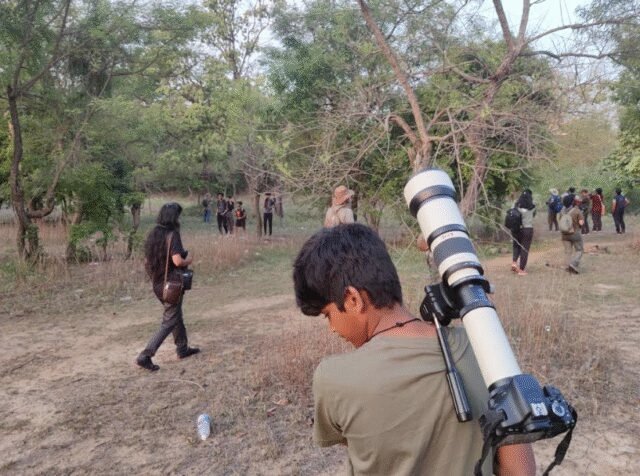Hyderabad:For Krishna Prasad Pandithi, an air-conditioning professional from Hyderabad, the Hyderabad Bird Atlas (HBA) project has transformed his family. His sons Riyansh, 11, and Darshik, 9, once glued to mobile screens, are now avid birdwatchers, after he took them to an orientation walk at KBR Park.
“Like many kids, they were always on their phones. I wanted to change that,” said Krishna. After the orientation session, his elder son got deeply interested in birdwatching and photography.
Riyansh, the elder son, has since identified over 150 bird species and even won third prize in a photography contest held on Hyderabad Environment Day. “Now it’s more birds than mobiles,” Krishna smiled.
The boys are eagerly looking forward to the second season of the HBA scheduled to begin next month. “Last time we could only do three areas. This time they want to cover at least 30. Riyansh even wants to lead a team,” he added proudly.
The HBA, now gearing up for its second season, is part of a three-year citizen science initiative to document bird species across the city in different seasons. The first season, conducted in February during winter, saw 209 volunteers record over 195 species and more than 70,000 sightings. The survey included both resident and migratory species, providing valuable data on Hyderabad’s birdlife.
The upcoming season, scheduled from July 5 to 20, will focus on bird activity during the monsoon. The idea is to track seasonal changes in bird species especially as the city landscape changes with greenery, rainfall and insects.
“This is Telangana’s first-ever city bird atlas, and it is being shaped by both experienced birders and enthusiastic citizens,” said Sriram Reddy, the Hyderabad-based project coordinator. “We plan to conduct these surveys twice every year. The data can help in urban planning—areas rich in birdlife could be preserved as parks or sanctuaries instead of being built over. It helps both wildlife and humans. It also promotes birdwatching as a hobby, encouraging more people to connect with nature,” he explained.
The HBA initiative is being led by experts from WWF, Deccan Birders and Hyderabad Birding Pals, who mentor new participants. Many first-time volunteers from the winter survey can now identify 50 to 150 species.
“This project is not just about data collections,” said Farida Tampal, state director, WWF-India, speaking with Deccan Chronicle. “It’s about creating awareness. People with no knowledge about birds are becoming nature enthusiasts. During our last bird walk, a young woman who was a photographer spotted us and joined out of curiosity. She and her husband now take part in every event. These moments show how birdwatching can bring people closer to nature.”
The upcoming July survey is expected to reveal new bird species that were not seen in February. Volunteers will also study how birds respond to wetland conditions and urban greenery during the rains. Last season, over 720 checklists were submitted, and this time, the team hopes to match or surpass that number.
For families like Krishna’s, the project is already a success. “I just wanted my sons to look up from their screens. Now they look up at trees—and spot birds I didn’t even know existed,” he said.






